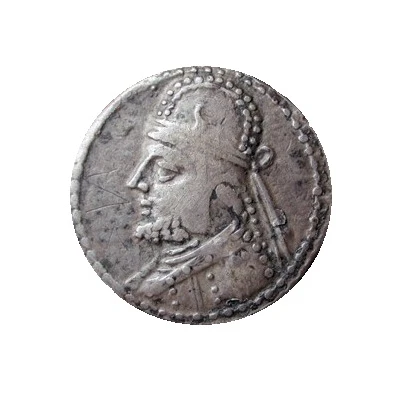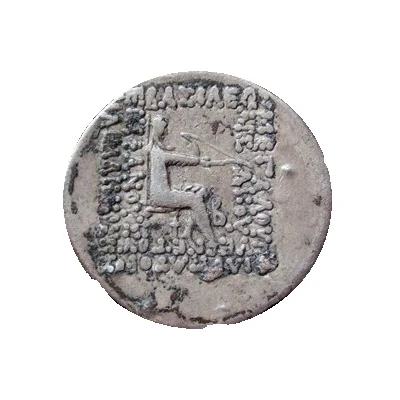


Tetradrachm - Darius Seleucia 80 BC - 70 BC
| Silver | 14 g | 30 mm |
| Issuer | Kingdom of Media-Atropatene (Greater Armenia) |
|---|---|
| King | Darius I (85 BC - 65 BC) |
| Type | Standard circulation coin |
| Years | 80 BC - 70 BC |
| Value | Tetradrachm (4) |
| Currency | Drachm |
| Composition | Silver |
| Weight | 14 g |
| Diameter | 30 mm |
| Shape | Round (irregular) |
| Technique | Hammered |
| Orientation | Variable alignment ↺ |
| Demonetized | Yes |
| Updated | 2024-10-09 |
| Numista | N#74524 |
|---|---|
| Rarity index | 100% |
Reverse
Beardless archer wearing bashlyk and cloak seated right on throne, holding bow in right hand; below bow, Greek letter Β; no border; seven-line Greek inscription.
Script: Greek
Lettering:
ΒΑΣΙΛΕΩΣ ΜΕΓΑΛΟΥ ΑΡΣΑΚΟΥ ΦΙΛΟΠΑΤΟΡΟΣ ΕΥΕΡΓΕΤΟΥ ΕΠΙΦΑΝΟΥΣ ΦΙΛΕΛΛΗΝΟΣ
Β
Comment
A. B. Nikitin maintains that Sellwood's types 35 and 36 were actually minted by Phraates III during the lifetime of his father Sinatruces which, Nikitin postulates, was a regular practice among the Arsacids. Fred Shore gives the Sellwood types 35, 36 and 37 to Phraates III.
Sellwood has suggested that Darius was only a provincial prince or governor and could not be responsible for the widespread issue of the type 35 and 36 coins from numerous mints. This must indicate these types were issued by another king with the requisite wider authority.
Interesting fact
One interesting fact about this coin is that it features an image of Darius I, the king of the Achaemenid Empire, on one side, and an image of the goddess Athena on the other. This coin was minted during the reign of Darius' son, Xerxes I, who ruled the Achaemenid Empire from 486 to 465 BCE. The fact that the coin features both a Persian king and a Greek goddess highlights the cultural exchange and influence that existed between the two civilizations during this time period.